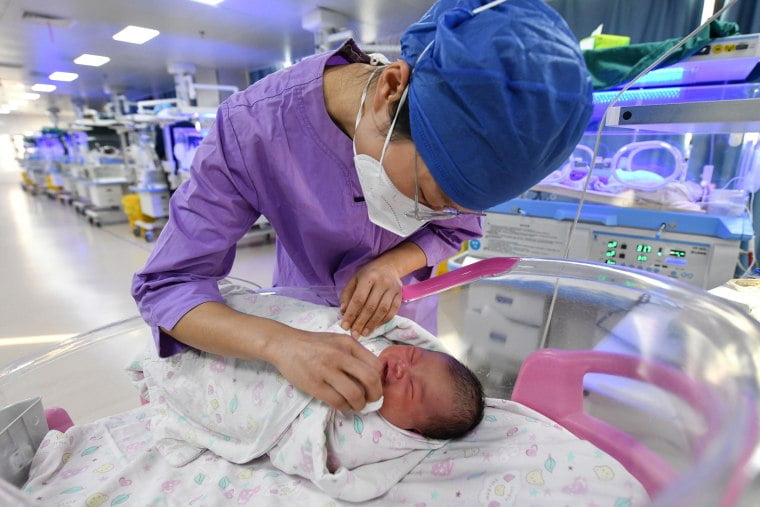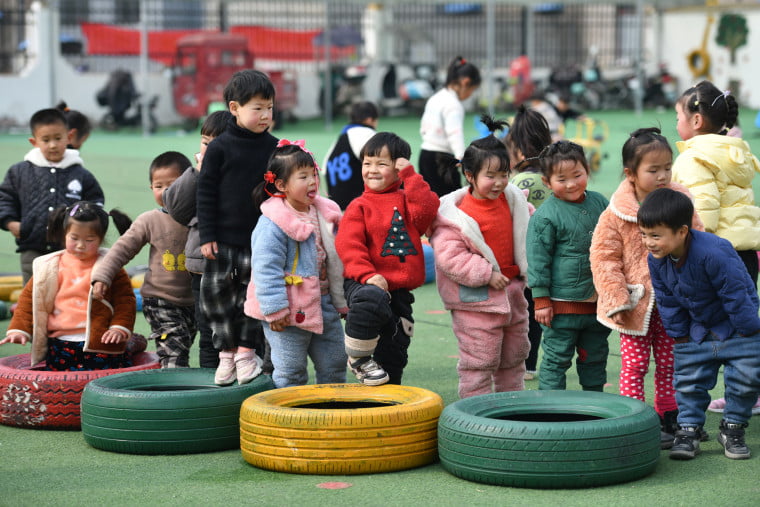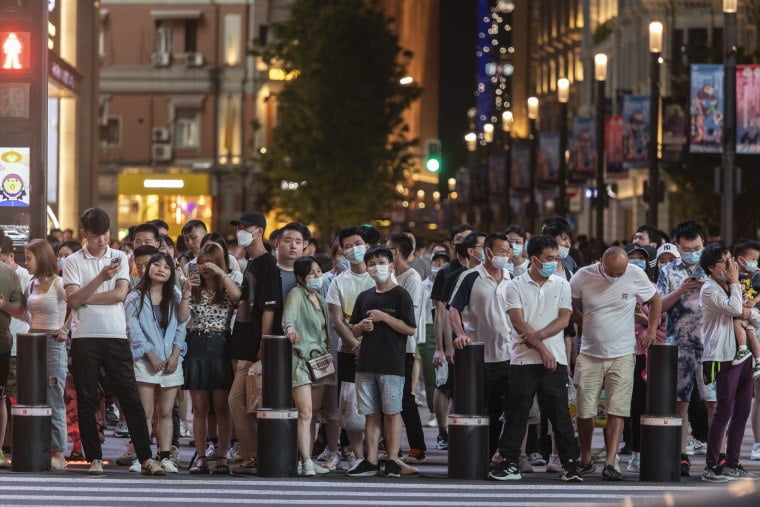9.02 million babies were born in China last year, over half a million less than the year before.

9.02 million babies were born in China last year, over half a million less than the year before.
Hong Kong — According to officials on Wednesday, China’s population fell for the second consecutive year in 2018. This was caused by record-low birth rates and a surge in Covid-19 deaths, which have increased concerns over China’s ageing population in the second-biggest economy in the world.
According to the National Statistics Bureau, there were 1.409 billion people living on Chinese mainland as of the end of the previous year, a decrease of more than 2 million from 2022. Comparably, China’s population declined by 850,000 between 2021 and 2022—the country’s first fall in six decades.
Over half a million fewer babies were born last year than the year before, with a birthrate of 6.39 per thousand, the lowest since the People’s Republic of China was founded in 1949.
China saw fewer than 10 million births for the second year in a row. Young people’s hesitation to have children was attributed to a number of factors, including the high expense of living, the continuance of traditional gender roles, and a lack of work-life balance.
More over 11 million people died, according to officials, the highest number since China was going through the Cultural Revolution in 1974. According to a U.S. study published last year, China had over two million more deaths in the first half of 2023 than expected after authorities abruptly reversed three years of “zero-Covid” restrictions, exposing a population that had hardly been exposed to the coronavirus.
According to officials on Wednesday, the economy expanded by 5.2% in 2018, which was less than the growth rate before to the epidemic but still in line with the government’s annual target.
At a press conference in Beijing, Kang Yi, the director of the National Bureau of Statistics, stated, “The situation of the national economy is picking up and improving.” He added that economic development will continue to face challenges due to the growing complexity and uncertainty of the global environment.

In response, local governments have implemented tax exemptions, child care subsidies, and other inducements to procreate. In certain instances, they have gone so far as to facilitate unmarried women’s childbearing, which has traditionally been frowned upon. According to official media, a statue representing a family of three in the central city of Wuhan was modified late last year to include two more children.
The public’s reaction has not been overly positive. The number of newborns reached a peak of 17.86 million in 2016, according to the statistics agency, and has been declining annually since then. Moreover, marriage rates have never been lower.
“Why is it necessary for us to have children?” this month, I came across a comment on Weibo, a well-known Chinese social media site. “We still have to look after the young and the old despite all of the stress.” But the pressure would be cut in half if there were no babies.
“Why is it necessary for us to have children?” this month, I came across a comment on Weibo, a well-known Chinese social media site. “We still have to look after the young and the old despite all of the stress.” But the pressure would be cut in half if there were no babies.
In addition, they worry about the economy since millions of university graduates struggle to find employment that utilizes their expertise.

Experts are becoming increasingly concerned about China’s aging population and potential labor shortages as a result of the declining birthrate; some have even suggested hiking the retirement age in order to increase the workforce.
Experts are becoming increasingly concerned about China’s aging population and potential labor shortages as a result of the declining birthrate; some have even suggested hiking the retirement age in order to increase the workforce.
According to government figures, the percentage of the Chinese population over 65 was 15.4% in 2023, which fits the UN definition of a “aged society.” (That percentage in the US was roughly 17.3% in 2022).
According to government figures, the percentage of the Chinese population over 65 was 15.4% in 2023, which fits the UN definition of a “aged society.” (That percentage in the US was roughly 17.3% in 2022).
According to state media, by 2035, the “silver economy” might account for 30 trillion yuan ($4.2 trillion), or almost 10%, of China’s GDP, up from its current level of 7 trillion yuan ($980 billion), or 6%.
A few social media users applauded China’s declining population.
Connect with us for the Latest, Current, and Breaking News news updates and videos from thefoxdaily.com. The most recent news in the United States, around the world , in business, opinion, technology, politics, and sports, follow Thefoxdaily on X, Facebook, and Instagram .
